
views
Measuring Linear Feet in General
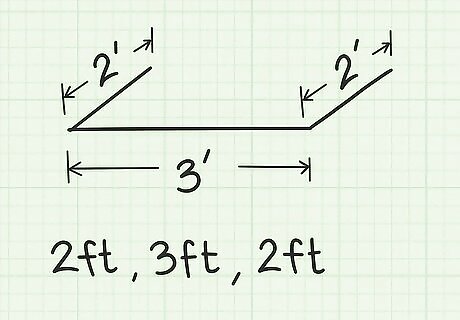
Measure the lengths of the pieces you need. Review the design plan for your project. Identify all the pieces of any particular material type that you need. Determine the length of each separate piece. For example, suppose you are installing a new kitchen countertop. Your plan might require a two-foot length from the wall to the sink, a three-foot length from the end of the sink to the corner, and another two-foot length to wrap around the corner.

Add the individual lengths together. To find the total number of linear feet that you need for your project, add together the lengths of the individual parts. Imagine the individual pieces lined up end-to-end and determine the length from one end to the other. In the countertop example, you need three pieces of two feet, three feet, and two feet. Thus, the total number of linear feet of countertop material that you need is 2+3+2=7 feet.
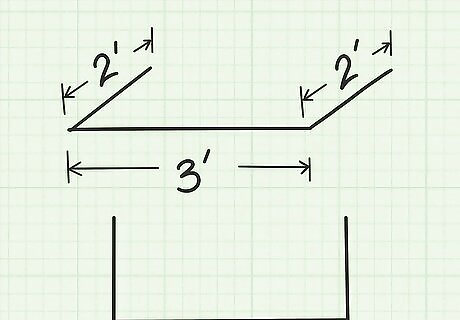
Check your project instructions. For some projects, the design plan or instructions may tell you the number of linear feet that you need. For example, suppose you were knitting a sweater. It would be impossible to look at a picture of a sweater and determine the amount of yarn that you need. Somewhere, the instructions should tell you how much yarn to purchase.
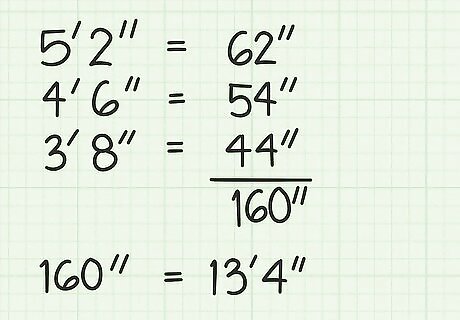
Convert units if needed. By definition, "linear feet" are measured in feet. However, the individual pieces you need may be measured in inches or a combination of feet and inches. It may help first to convert all your measurements to inches, then add them, and convert to feet and inches in your final step. For example, suppose you have three pieces measuring 5'2", 4'6" and 3'8". If you convert each of these to inches, you get 62", 54" and 44". Add them to get a total of 160". Divide this by 12 inches per foot, and you will get a total of 13 feet, with four inches left over. Thus, the total linear footage is 13 feet, 4 inches.
Measuring Linear Feet for a Bookshelf Project
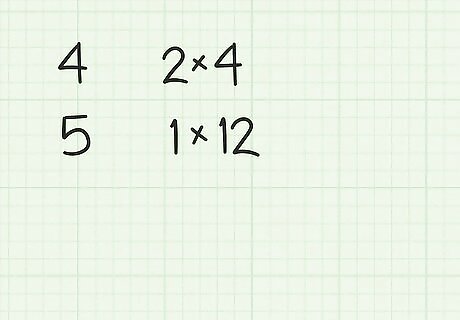
Divide your project into different categories of materials. Make a list of the separate materials you will need for your project. For example, separate out the different sizes of boards that you plan to use into separate categories. You will need to calculate the amount of material in each category. As a running example, suppose you are planning to build a bookshelf. The sides of the bookshelf will be made with four 2 x 4 boards, one in each corner. The top, bottom, and three shelves in the middle are made from 1 x 12 boards. In this case, divide the building materials into two categories, 2x4's and 1x12's.
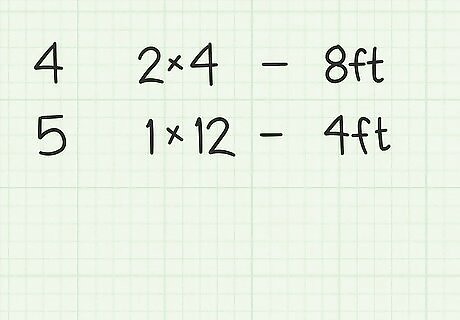
Calculate the length of each individual piece. After deciding which building materials you will use in your project, determine the length of each individual piece. Take care not to measure the same pieces multiple times. It can be helpful to check off each board on a sketch of your project and label each piece with its length as you go. In the bookshelf example, suppose that the four 2x4s are each eight feet long and that the five 1x12 boards you use for the top, bottom, and shelves are all four feet long.
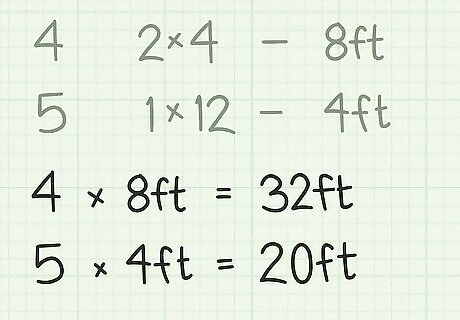
Calculate the total length of each building material separately. You need to determine how much of each type of board to buy in order to complete your project. Add up the lengths of the pieces of each board size. Keep them apart from each other and find a separate total for each style. In the bookshelf example, since you have four eight-foot long corner pieces made from 2x4 boards and five pieces made from 1x12 boards (three shelves plus the top and bottom), you can calculate totals as follows: 2x4 boards: 8 feet times 4 boards = 32 linear feet 1x12 boards: 4 feet times 5 boards = 20 linear feet
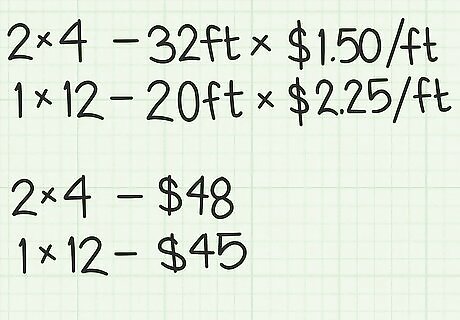
Use your totals to determine the cost of your materials. When you know how much of each material you need for your project, you know how much you'll hypothetically need to buy. Find the price of each type of material (per foot) and multiply by the total linear foot value obtained for the type of material to find the approximate cost of the material. In the bookshelf example, you need 32 feet of 2x4 boards and 20 feet of 1x12 boards. Suppose 2x4s sell for $1.50 per linear foot and 1x12 boards sell for $2.25 per linear foot. In this case, you would determine the costs of these materials by multiplying as follows: 2x4 boards: $1.50 x 32 = $48 1x12 boards: $2.25 x 20 = $45
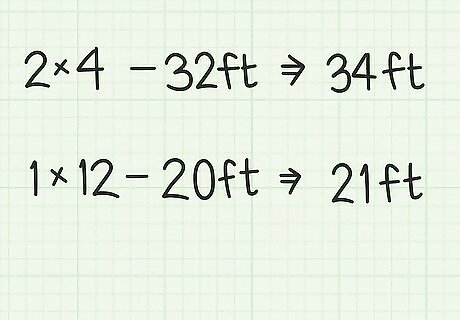
Be conservative with your purchases. When it comes to building projects, one of the most widely-circulated tips of the trade is to bring slightly more material than you think you'll need. This may cost a bit more up front, but it can save time and cost overall.
Calculating Linear Feet for a Deck Project
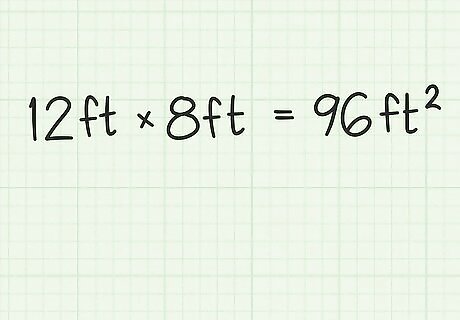
Calculate the square footage of your deck area. Assume for this example that you are building a simple rectangular deck. The area is found by multiplying the length of the deck by its width. For this example, suppose you are building a deck that is 12 feet long by 8 feet wide. The total area is ( 12 feet ) ( 8 feet ) = 96 sq. ft. {\displaystyle (12{\text{ feet}})(8{\text{ feet}})=96{\text{ sq. ft.}}} (12{\text{ feet}})(8{\text{ feet}})=96{\text{ sq. ft.}}.
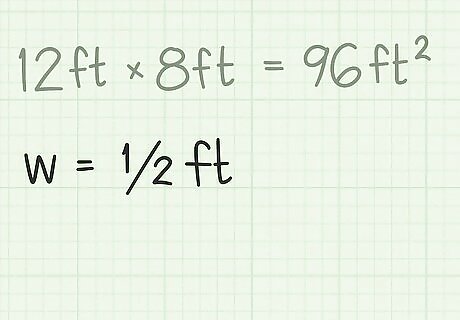
Decide the width of deck material you wish to use. You are likely to find deck materials in widths ranging from four inches to twelve inches wide. You will need to consider the type of material, whether you want natural wood or artificial composite materials, and how your material choice will affect the overall look of your final project.
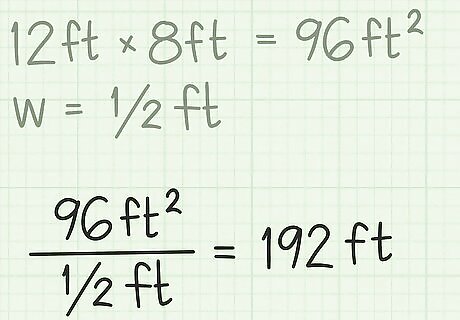
Divide the total area by the width of the boards used. When you know the size of your deck and the width of your building material, divide one by the other to calculate the linear footage that you need to buy. For a deck of 96 square feet, using 6 inch (1/2 foot) wide boards, you need: linear feet = 96 sq. ft. 1 / 2 feet = 192 feet {\displaystyle {\text{linear feet}}={\frac {96{\text{ sq. ft.}}}{1/2{\text{ feet}}}}=192{\text{ feet}}} {\text{linear feet}}={\frac {96{\text{ sq. ft.}}}{1/2{\text{ feet}}}}=192{\text{ feet}}
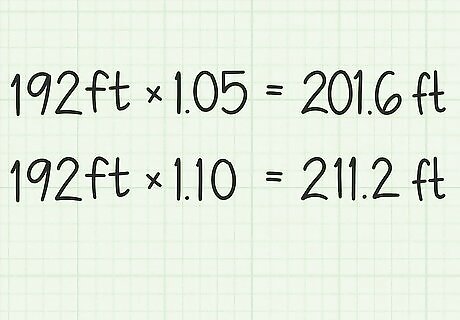
Plan for some waste. You cannot expect that every board will be used perfectly in its full length. Professional builders plan for about 5% to 10% “waste” when purchasing. Multiply your linear footage by 1.05 (5%) or 1.10 (10%) to find the total you should purchase. For example, if you calculated a linear footage need of 192 feet, then you should get: 192 ∗ 1.05 = 201.6 feet {\displaystyle 192*1.05=201.6{\text{ feet}}} 192*1.05=201.6{\text{ feet}} 192 ∗ 1.10 = 211.2 feet {\displaystyle 192*1.10=211.2{\text{ feet}}} 192*1.10=211.2{\text{ feet}}

Purchase extra if you are planning a more creative design. The above calculations are based on a fairly simple rectangular deck with boards that are laid out in straight lines. If you plan to do something more creative, like laying the boards along diagonal lines, you are likely to waste more material in the corners making the boards fit. If so, you will need to plan more linear footage.
Using Specialized Linear Foot Calculators

Search the Internet for online calculators. A variety of sources online provide special calculators that will help you decide the linear footage that you need for a range of projects. If you have a special project, search for “linear foot calculator” and some brief description of your project. For example, the following specialized calculators are available: Upack.com provides a description of how to calculate the linear footage that you need in a moving truck. There is an online calculator based on the number of rooms that you plan to pack and move. edeck.com is a company that sells outdoor deck building materials. On their site, you can choose the width of decking that you want, and it will calculate the linear footage for you.
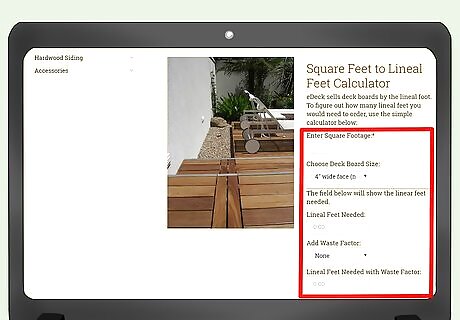
Collect your measurements. Use the online calculator as a guide to collect necessary measurements. The company or agency that created the online calculator generally will direct you to provide certain information. For building a deck, you will need to provide the square footage and board width. For storing rare manuscripts, you will need to provide the number and size of specialized storage boxes. In any event, read the instructions carefully and provide the information in the units that are expected. Some sites will allow you to select your own measurement units, such as feet or yards. Others are pre-programmed for a particular unit. Read the instructions carefully.
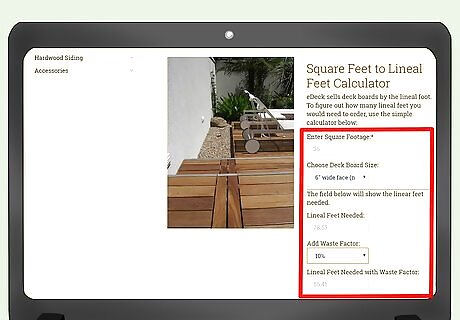
Enter your data and receive your results. For most sites, as soon as you enter the necessary information, the site will automatically provide the linear footage that you desire. Check the site carefully for a “reset” button. You may need to click “reset” between calculations if you wish to conduct more than one calculation.



















Comments
0 comment